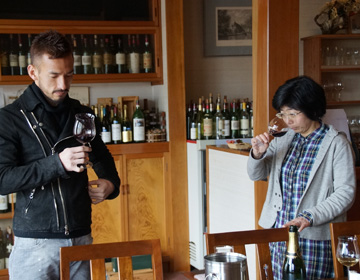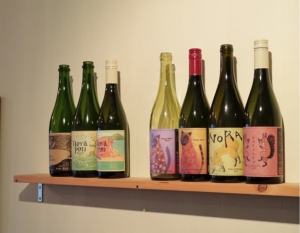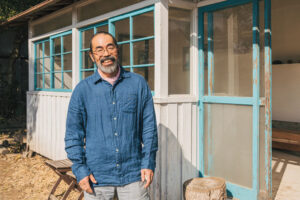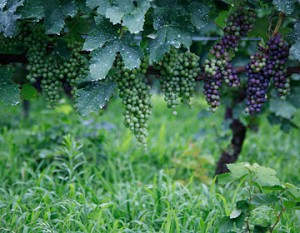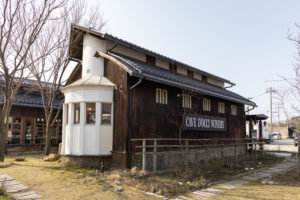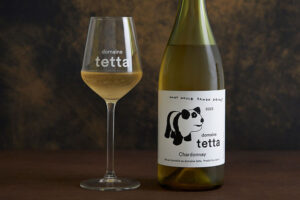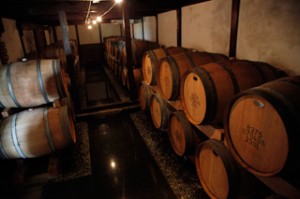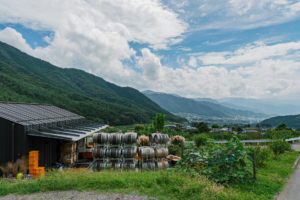Wine representing Yamagata
This is a winery located in Kaminoyama, Yamagata Prefecture. There are so-called wineries that import wine in barrels, bottles them and puts them on the market, but here at Takeda Winery, grapes are grown on their own farm, and the wine is produced from those grapes. This is a true winery.
We interviewed Noriko Kishihira, President and Representative Director, and Grape Farming / Brewing Director. There were rows of grape hedges on the sunny slope. Japanese soil is rich, and when grape is grown, they tend to grow them on “shelves” while in Europe, where they have a lot of land, they grow them on hedges. Sometimes it is said that infertile land is better for growing wine grapes but Kishihira does not agree. “Saint-Emilion, famous for Bordeaux wine is actually a rich type of soil. The issue is not about the richness of the soil. It’s more an issue of balance, the existence of microbes, and how well you care for the field.

Taking care of the ingredients
Which is more important for good wine? Good material or ingredients or the technique? It seems that question was on Nakata’s mind, as he too, is a wine enthusiast. So he asked her that question directly.
“Of course both are important. But if I must choose, I’d say ingredients. You can’t make wine from bad grapes, but there are many instances of the reverse happening.“ As if to prove that point, at Takeda Winery, the 15-hectare grape field is divided into 26 sections, and soil is tested and analyzed from 20 spots within each section. Depending on the outcome of the tests, minerals are added. They also partially adopt biodynamics, and repeat trial and error in order to make good grapes.
Wine that is made with locally grown grapes, Yamagata wine made with Yamagata grapes. One of the famous wines made by Takeda Winery is named “Zao Star Wine” after Mount Zao in Yamagata. It is popular for its balanced and timeless taste that never gets boring. Other popular wines include Domaine Takeda and the premium brand Chateau Takeda.
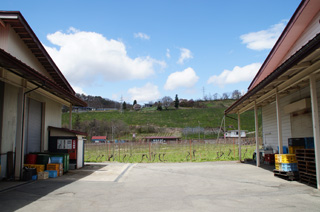
There is philosophy to good wine
Most wineries use specialized yeast for fermentation, but at Takeda Winery, the fermentation is done with the natural yeast that is originally on the grapes. The fact they use wild yeast means that multiple types of yeast are involved in the fermentation. As the fermentation process progresses, at each stage a different yeast becomes dominant, and takes over the process. So the change in the yeast builds up various layers of flavor. Of course, this complicates the fermentation process, but they work with wild yeast in pursuit of great taste.
There are both traditional and new methods in wine making. So by updating knowledge day by day, the level of skill certainly changes. “However,” said Kishihira, “the biggest element here is the philosophical issue. I think wine made by someone who has a clear vision of the type of wine they want to make is always more interesting, more moving.”




